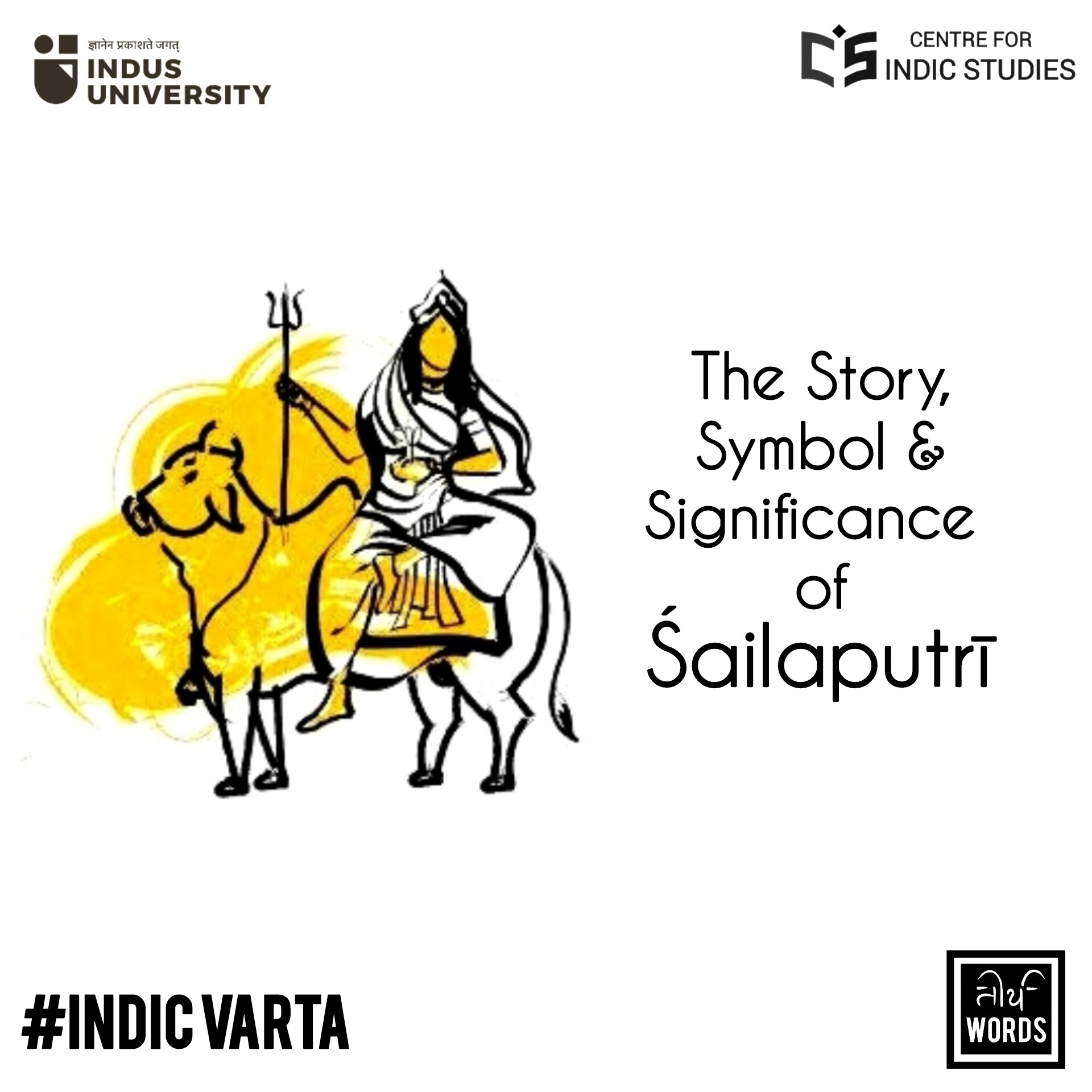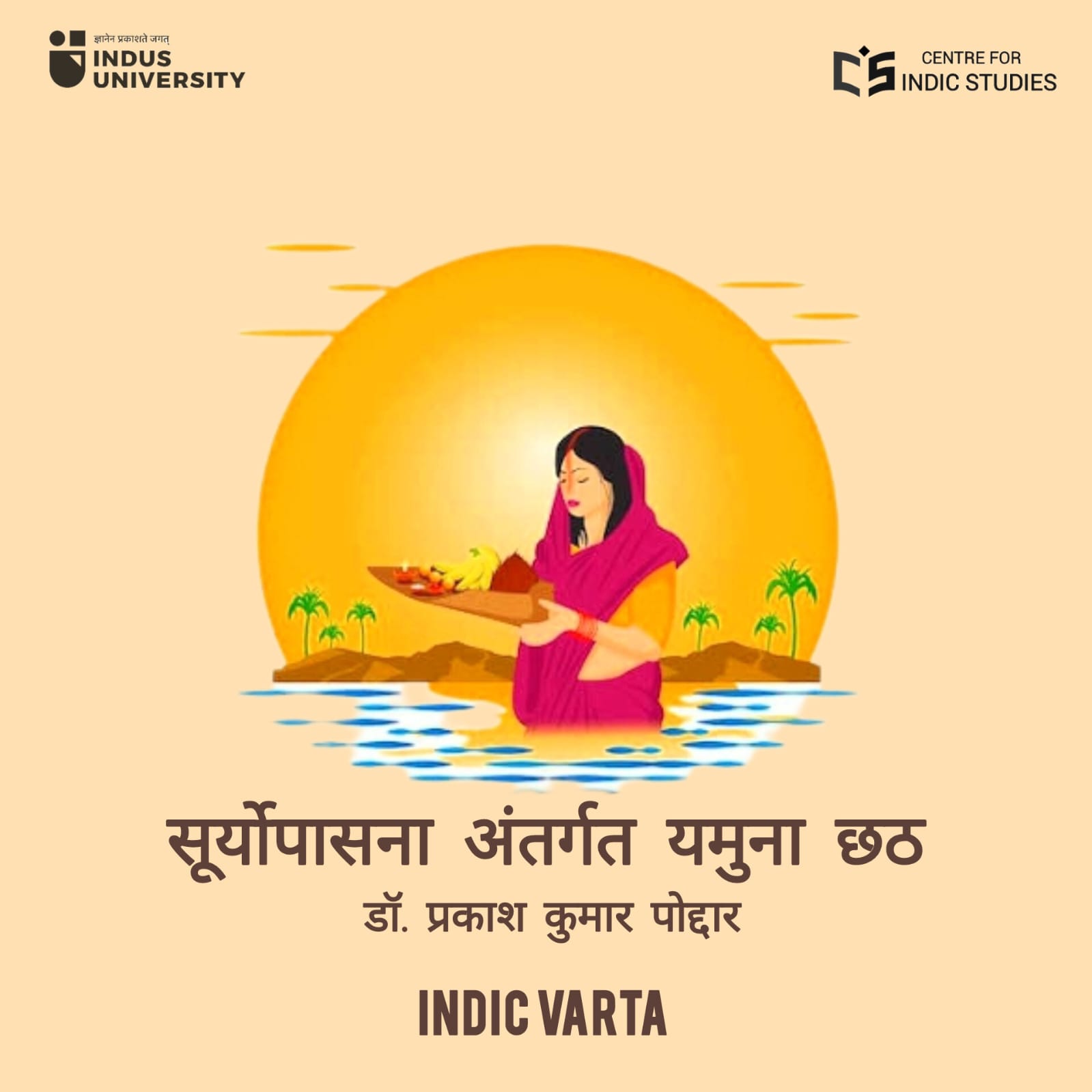- Visitor:22
- Published on:
Sakti Worship in North-East India: A Historical & Cultural Perspective (Part 1)
The Sakta cult of Ma Durga is also widely prevalent in Manipur among different sections of the Meitei Hindus. The travelogues of the Chinese Buddhist pilgrim Huien Tsang in the 7th century A.D. have several references of Manipur in the context of the Kámárupá and Kámákhya.

Historically speaking, the region of Kámárupá (present-day Assam) has always been well-known as the original centre for the followers of the Sákta panth of Sanatan Dharma. Sákti worship is inseparable from the Tantras – a series of ancient religious works, wherein the various ceremonies, prayers and rituals are prescribed in the form of a dialogue between Siva and his consort Ma Párváti. The Ma Kámákhya Sáktipeeth is the premier seat of worship for all Sákta sadhakas and is renowned for the same among all Hindus throughout the globe. Its location on the Nilachal hill on the south bank of the Brahmaputra is also a special and unique one for that matter.
As written by Shri Anup Mahanta in his book Kamakhya Temple: Legends and History, geologists have held the view that the Brahmaputra, in its journey through this area, had cut through the very stable geological formation of the Khasi hills, and the landscape begins to rise from here sharply towards the south. The river could not dislodge the very stable portions of the hilly range, which eventually left many small hillocks on its bank intact. As a result, the wide and the mighty Brahmaputra is the narrowest in this part of the region. The river island of Umánándá in the middle of the river justifiably testifies this fact. Many ancient Devasthanams dating back to several centuries in the past are situated on this stretch of the Brahmaputra such as Umánándá, Návágráha, Ugrátárá, Sukleswár, Dirgesvári, and Mánikárneswar.
The rites and rituals that can be observed at several Sáktipeeths of Assam and the North-East are intense and traditional, rooted in Tantras and Mantras, slokás, stábás, and kábásas. Several local elements of worship have influenced these religious rituals at the Kámákhya temple since antiquity. The usage of meat and fish as prásádám in the various Sáktipeeths of the North-East often intrigues people from other parts of the country. Offerings to Má Kámákhya are usually kumkuma (sindoor) and flowers. Animal sacrifices constitute an important part of these offerings to the Dévi. The common animals whose blood and meat, along with their heads, are offered as a sacrificial offering to the Dévi include buffaloes, goats, pigeons, and ducks.
As a general norm, female animals are exempt from bali, a rule which is however not to be followed strictly during times of mass animal sacrifice on occasions like Durga Puja and Kali Puja. It is a distinctive anthropological and geographical feature, informed by the lifestyles, food habits and traditional religious belief systems of several hundreds of vanavasi communities residing in this part of Bharat. The greater Hindu society and community that has been formed here over the centuries is a reflection of the history and culture of these vanavasis to a large extent. In fact, the rituals followed at the Kámákhya temple through the ages provide a lens to understanding the major defining characteristic traits of Sanatan Dharma being practised in the North-East as a result of the intermingling of numerous vanavasi communities.
Various forms of the Dévi are worshipped at the Kámákhya Sáktipeeth, e.g. Mánásá Dévi, associated with snakes. The humid and tropical weather of North-East India has always provided a safe haven for snakes of different species, both poisonous and non-poisonous. Hence, snakes have been able to induce feelings of respect, fear and awe at the same time in the popular local imagery of the people here. Ma Mánásá Pooja is a popular form of worship prevalent among many vanavasi communities of Assam, such as Bodos, Rabhas, and Kacharis. The Deodhani Nritya, which constitutes an essential part of several religious festivals of the Bodos and the Rabhas, is performed on the occasion of Ma Mánásá Pooja. This Pooja is performed in honour of Mánásá Dévi before the onset of the annual monsoon rains, seeking her blessings to protect her devotees from snake bites and any other unwanted misfortunes that may befall upon them and their families.
The matriarchal family system is still in prevalence among many vanavasi communities of the Brahmaputra Valley, besides the Khasis, Garos, and Jaintias of Meghalaya. These communities have always believed that the supreme authority and guiding force of the Universe is feminine and not masculine. It is a religious custom among several such communities, such as Jaintias, Bodos, and Rajbongshis to worship Sákti as the protector and preserver of fertility, longevity and good health through elaborate Tantric rituals, which commonly include bali-pratha. Mention here may be made of the temples of Támáreswári in Arunachal Pradesh and Tripura Sundari in Agartala, Tripura.
Both the Khasis and the Jayantias are believed to be the original sadhakas and bhaktas of Ma Kámákhya. Even today, a significant section of the Jaintias worship Ma Kámákhya as Jayanteswári Devi in the Ma Durga temple situated at Nartiang village of Jowai in the Jaintia hills of Meghalaya. There is also a section of historians and anthropologists who are of the opinion that the present-day Kámákhya Sáktipeeth in the Nilachal hills might well have been an ancient sacrificial site of the Khasis. While almost 90% of the Khasis have embraced Christianity as of today, the Jaintias of Jowai and its neighbouring areas have been successfully resisting the evangelist mission of the Church since the days of Kiang Nangbah and even earlier.
The Sakta cult of Ma Durga is also widely prevalent in Manipur among different sections of the Meitei Hindus. The travelogues of the Chinese Buddhist pilgrim Huien Tsang in the 7th century A.D. have several references of Manipur in the context of the Kámárupá and Kámákhya. Both the Kalika Purana and the Vishnu Purana speak extensively about Kámárupá. In the Vishnu Purana, it is written that Kámárupá encompasses an area enclosed within 100 yajanas all around the Kámákhya Sáktipeeth. Here, 100 yajanas equals to a distance of around 450 miles which means that present-day Eastern Bengal (Bangladesh) and Bhutan were also a part of Kámárupá.[1] It is noteworthy of mentioning here that there are several Hindu Bengali families in Tripura and a few places of Lower Assam such as Dhubri and Mankachar, who pay their obeisance every year to Ma Dhakesvári in Bangladesh after the annual Durga Puja celebrations.
Worship of Jayantia Devi in Meghalaya
As per available historical records, the Jaintia Kingdom was established in 1500 A.D. The first British expedition against the Jaintias was launched in February 1774. Conflict erupted when the Jaintias had obstructed and taxed the traders and the Christian missionaries in particular who were British subjects, while they were travelling on their boats down the Surma river to Dacca. The then Jaintia kingdom under Raja Chatra Singha exacted tolls from the traders of the English East India Company, which was looked upon by the British as an attack on their Empire and its imperial authority.
As a consequence, the British launched an attack on the Jaintia kingdom and in spite of a very strong opposition by the Jaintias, they were defeated.[2] However, the British refused to annex the kingdom to its dominions. They continued to raise allegations that the Jaintias practiced witchcraft and black magic, and also kidnapped British subjects who were later sacrificed at the altar of Ma Kali. However, these allegations of the Jaintias performing human sacrifices still remain debatable due to the lack of convincing and factual evidence.
The ancient land of Pragjyotishpur (The City of Eastern Astrology or present-day Guwahati) which houses the Kámákhyá Sáktipeeth, along with its associated Tantric rites and rituals, intrigued the foreigners at first. They could not comprehend the philosophy and significance of Sákti worship in this part of Bharat, and thus tweaked their observations with their own prejudiced interpretations informed by an Abrahamic, European discourse. It is this same discourse which sees women essentially as evil and sub-human; hence, not suitable to be worshipped or glorified in any manner possible.
The Jaintias, like the Khasis and the Garos, still reckon their descent through the female line.[3] They believe that the world is ruled by the supreme goddess called Ka Blai Synshar (Ka meaning ‘she’). Their indigenous religion is known as Ka Niam. With the growing popularity of Christianity, the suffix Tre, meaning ‘original’, has been added by the non-Christian Jaintias who take pride in themselves as the followers of the Niam faith system. Hence, presently, it is known as Ka Niam-Tre, meaning ‘original religion’. The term ‘Jaintia’ came to be used only after the area came under the British rule in the year 1835.
This was done in order to differentiate it from the plains areas of the old Jaintia kingdom, the capital of which was Jaintiapur situated in the Jaintia Parganas, and the whole area of which now lies in Bangladesh. A popular local belief prevalent in the region is that the origins of the word ‘Jaintia’ may be traced to Jayanti Devi or Jayantesvári (believed to be Kali Ma). She was one of the major deities worshipped by the Jaintia royal family during the 16th century after consolidating its sway over the plains tracts in the south. 15th century Jaintias had a separate political entity popularly known as ‘The Land of the Twelve Tribal Chiefs’ headed by a king who could knit them all together.
The present-day Jaintia Hills District constituted the nucleus from which the Jaintia kingdom eventually developed. Slowly, this kingdom began to play an increasingly important role in the history and culture of the North-East from the 17th century onwards. The Jaintia kings belonged to the royal family of Sutnga who, at first, ruled in the hill areas only. But, they gradually extended their territory by means of military conquests both in the areas to the north and the south, but particularly towards the south.[4] Originally, their capital was at Nartiang (famous for a 600-year old Durga temple), but later, they shifted to the hills of Jaintiapur in the plains of Sylhet (today’s Bangladesh).
Located in the West Jaintia Hills, the Nartiang Durga temple in Jowai, Meghalaya is one among the fifty-two Sáktipeethas of Bharat, where Devi-Sákti is worshipped as Ma Jayanti or Jayanteswári. The Devi’s left thigh is believed to have fallen at Nartiang in the Jaintia Hills. According to the head Pujari of this temple, several rituals that are followed here share similarities with the Bhadrakali temples of Kerala. The Durga Nartiang temple was built by the Jaintia king Dan Manik. Ma Jayanteswári was the presiding deity of the Jaintia royal family and a central figure in the Niam-tre faith, which has many similarities with the tradition of Devi worship in Sanatan Dharma.
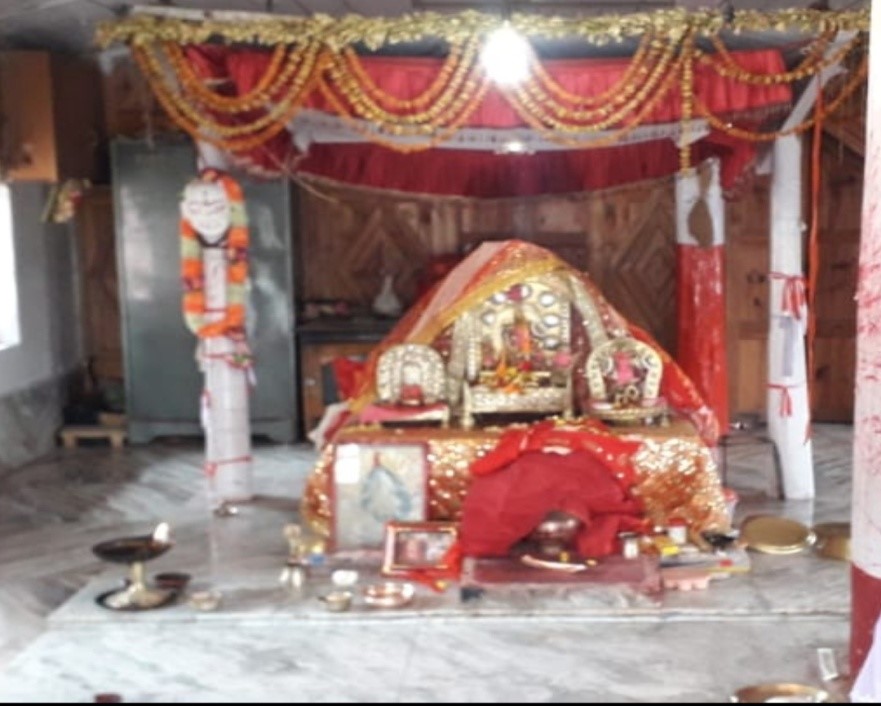
The Pnars/Syntengs/Jaintias of the Jaintia Hills believe that Niam-tre is their traditional faith system which needs to protected and saved from being appropriated by or digested into any other foreign faith/religion. The element of worshipping Sákti in Niam-tre eventually became assimilated into the Sákta Parampara of Sanatan Dharma. Since practitioners of the ancient Niam-tre faith did not worship any murti, the tradition continues even today. They share much in common with Sanatan Hindu traditions.
E.g. followers of the Niam-tre faith system are very much alike when it comes to the rituals of death. Just like in any other ordinary Hindu family, they cremate their dead unlike the Christians. They also have similar customs for rituals related to pregnancy, birth, and marriage. Hindu Jaintias of Meghalaya are primarily concentrated in the three places of Mihmyntdu, Jowai, and Nartiang. A declining religious belief system, Niam-tre is an ode to Mother Nature’s power to create, nurture and sustain life.
Niam-tre is still the main faith system that constitutes an intrinsic and inseparable part of the different religious rites and rituals in the Durga temple at Nartiang. These are not performed in the conventional way as is the case in the plains, but in a unique way, which is a beautiful blend of Hindu and ancient Khasi traditions. The local chieftain or Syiem is considered as the chief patron of this temple. The popular belief here is that the locals of the Jaintia kingdom were not aware and familiar with the Puja rituals, and since they could not find any Brahmin from neighbouring Assam to preside over these rituals, they therefore decided to invite the Deshmukh Brahmins from Western India as pujaris. At present, it is the 30th generation of pujaris who are looking after the day-to-day functioning of this temple.
Their forefathers were brought by the Jaintia king from the area encompassing present-day Bangladesh and they belong to the Maharashtrian Deshmukh Brahmin community. Bali-pratha is one of the commonest and popular modes of worship of the Devi at the Nartiang Durga temple. Goats, pigeons, and ducks are the most common animals sacrificed on the day of Astámi during the annual Durga Puja celebrations. Earlier, the temple used to attract a large number of pilgrims on the occasion of Durga Puja, which is the most important festival observed here. But, over the past few years, in the words of Anil Deshmukh, the mukhya pujari of this temple, “There has been a continuous decrease in the number of visitors to this temple.”
Just like in any other part of Eastern India including Bengal, Assam, Tripura, Odisha, and Bihar, among the Hindus of Meghalaya too, Mahalaya marks the onset of Durga Puja. It heralds the end of the Pitru Paksha period and the advent of Devi Paksha or arrival of Ma Durga onto the earth. One of the most important rituals of Mahalaya among the Hindu Jaintias of Meghalaya is waking up at dawn and immersing oneself in the mesmerizing slokas of the Devi Stuti. Rituals on the day of Mahalaya at the Durga Nartiang temple include recitals from the scriptures, recalling the story of how Ma Durga was adorned with weapons by all the Devatás, which awakened her inner powers eventually leading the Sákti in her to kill all the Asurás.
Mahalaya is therefore a celebration of good over evil, of hope, of the tremendous powers that reside in a woman and how once awakened, she can destroy all the evil in this world. During Durga Puja, the trunk of a banana tree is worshipped as Ma Durga at the Nartiang Durga temple. It is beautifully dressed up as Durga in a red saree and decorated with other traditional finery by the chief Pujari (Syiem) of the temple. At the end of the four-day festivities, the trunk with all its clothes and jewels is ceremoniously immersed in the nearby Myntdu River. Bidding adieu to Ma Durga and immersing her image (that of the banana trunk) in the waters is popularly known as the ritual of visarjan that is performed every year, with the hope that Ma will return again the next year, bringing in joys and blessings of the season.
Visarjan signifies non-permanence, the temporary image dissolving and merging with one of the elements, i.e. jal (water), of Pancha Bhoota Sthálam, and thereby losing its physical identity. But, Ma’s presence in our lives is as permanent as our aatmán. It is only the murti which is immersed, her divine presence lives on. Dárpan Visarjan is another important ritual that is observed at the Nartiang Durga temple before the actual immersion of the murti. In this ceremony, the Syiem symbolically immerses the murti (the banana trunk) by capturing its reflection in a bowl of water and one has to see the reflection of Ma Durga through this bowl to attain Her blessings. Although this had been the practice traditionally, it is, however, now on the decline.
Worship of Sákti among the Hindus of Meghalaya would perhaps remain incomplete without a mention of the sacred groves of Mawphlang village. These are considered to be one among the most revered sacred groves of the region. The origin of the Mawphlang sacred forests can be traced to a religious belief system in which forests and everything associated with them are regarded as sacred. The local communities of the region believe it to be the home of a local deity called Labasa who has played a key role in preserving these forests for more than thousands of years. They are of the firm belief that it is Labasa who protects their forests and community from any mishap.
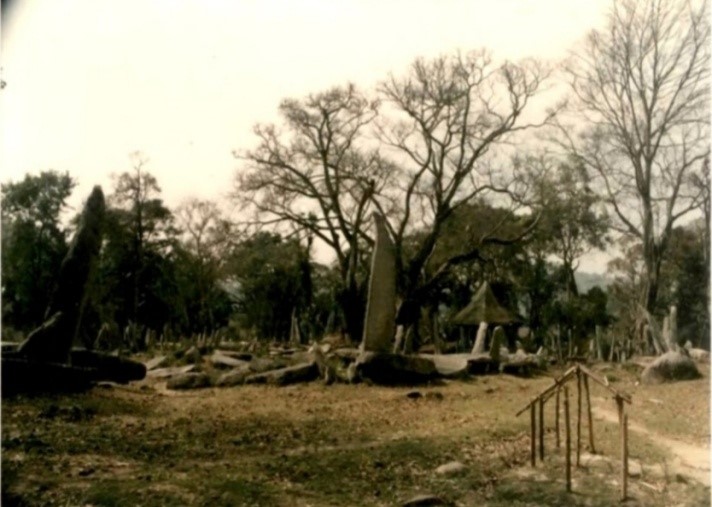
Labasa is believed to take on the form of a leopard or tiger, and protect the village. The Mawphlang sacred groves have one strict rule – ‘Nothing is allowed to be taken out of here. Not even a leaf, stone, or a dead log’. Removing even the tiniest leaf from these forests means disrespect to Labasa. It is said that whoever attempts to break this rule is punished with a fatal illness or even death in extreme circumstances. Every sacred forest in and around the villages of Nartiang and Jowai in Meghalaya has the presence of a sacred altar, mostly in the form of a monolith, covered on all sides by massive stones which serve as a space for offering bali to the Devi in a thanks-giving ceremony to Her. In the Khasi hills of Meghalaya, the sacred groves are locally known as Lav Kyntang, Lav Niam or Lav Lyngdoh, Khloo Blai in the Jaintia hills, and Asheng Khosi in the Garo hills.
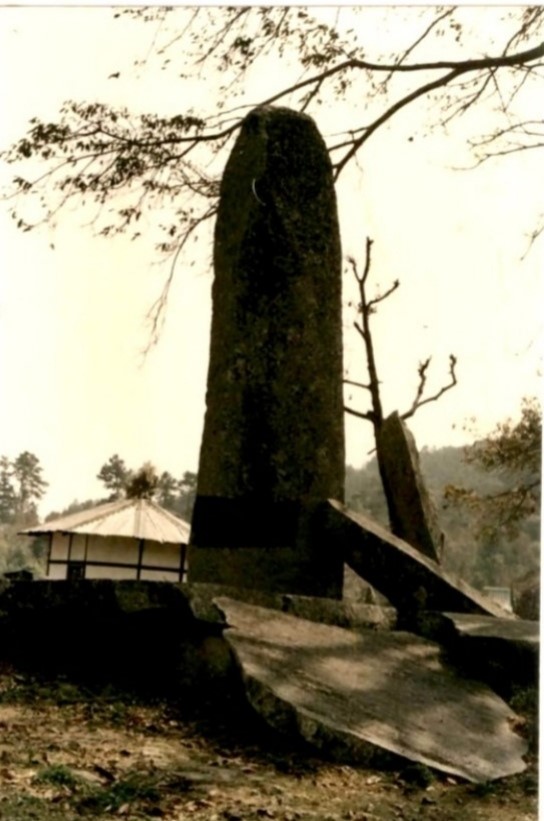
(To be Contd..)
References:
[1] Anup Mahanta. (2018). Kamakhya Temple – Legends and History. Spectrum Publications, Guwahati : Delhi, p. 38-43.
[2] Amarendra Kr. Thakur. (2014). Resistance to British Power in the Hills of North-East India: Some Issues. Dialogue, Vol. 16, No. 1, pp. 117-128.
[3] The Khasis as Hindus. Economic and Political Weekly. Vol. 51, Issue No. 10, March 2016.
[4] Ibid.
Center for Indic Studies is now on Telegram. For regular updates on Indic Varta, Indic Talks and Indic Courses at CIS, please subscribe to our telegram channel !
- 11 min read
- 1
- 0








